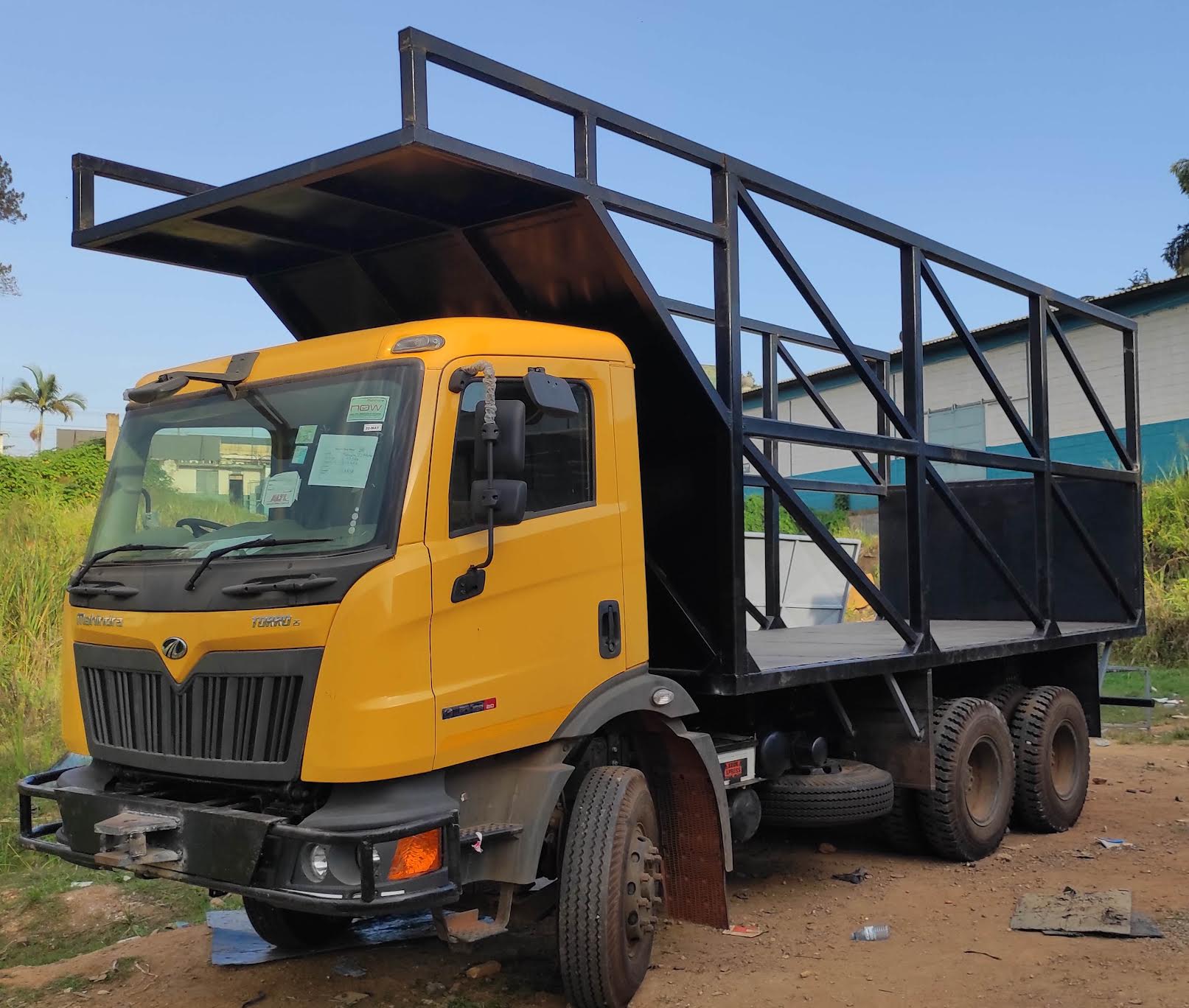
Fuel efficiency is a top priority for vehicle manufacturers and operators alike, particularly in industries reliant on commercial transport. For vehicle body builders, designing fuel-efficient vehicles isn’t just about cutting operational costs—it’s also about sustainability, performance, and meeting regulatory requirements. Through thoughtful vehicle body fabrication and design, fuel efficiency can be significantly improved without compromising functionality or safety. This article explores how commercial vehicle body builders can leverage efficient body designs to optimize fuel consumption.
1. Understanding the Impact of Vehicle Body Design on Fuel Efficiency
Aerodynamics and Air Resistance
One of the most significant factors affecting fuel efficiency is aerodynamics. A poorly designed vehicle body can create high air resistance (drag), causing the engine to work harder and consume more fuel. For vehicle body builders, prioritizing streamlined designs can:
- Reduce drag.
- Improve airflow around the vehicle.
- Enhance overall performance, especially at high speeds.
Weight and Material Selection
Vehicle weight directly impacts fuel consumption. Heavy vehicles require more power to move, leading to higher fuel usage. Vehicle body fabrication using lightweight materials like aluminum or advanced composites can:
- Decrease weight.
- Maintain structural integrity.
- Improve fuel efficiency without compromising on durability.
2. Strategies for Vehicle Body Builders to Enhance Fuel Efficiency
1. Optimizing Aerodynamic Designs
For commercial vehicle body builders, incorporating aerodynamic principles in design is key. Techniques include:
- Designing rounded edges and sloped roofs to minimize drag.
- Using underbody covers to smooth airflow beneath the vehicle.
- Adding side skirts and rear spoilers for trailers to further reduce turbulence.
For instance, vehicle body building for heavy machine industries can benefit from streamlined cabs and optimized trailer shapes to ensure better fuel economy.
2. Lightweight Construction
Adopting lightweight materials in vehicle body fabrication can significantly reduce weight. Common choices include:
- Aluminum: Light yet durable, suitable for structural components.
- High-Strength Steel: Provides excellent strength-to-weight ratio, ideal for commercial vehicle body builders.
- Composites: Advanced materials like carbon fiber, though costlier, offer unparalleled weight savings and performance.
3. Integration of Fuel-Saving Accessories
Adding fuel-saving accessories to vehicle bodies can make a noticeable difference. Examples include:
- Air deflectors and flow guides to channel air efficiently.
- Low-resistance tires designed to reduce rolling friction.
- Enclosed wheel arches to minimize drag.
3. Leveraging Technology in Vehicle Body Design
1. Computational Fluid Dynamics (CFD)
For vehicle body builders, CFD is a game-changer. This simulation technology allows engineers to visualize airflow around the vehicle and identify drag-inducing areas. By using CFD, builders can:
- Test various designs virtually.
- Optimize shapes without costly physical prototypes.
- Achieve significant fuel savings.
2. Modular and Flexible Designs
Developing flexible vehicle body designs enables the integration of features like detachable panels or modular cargo units. These designs:
- Allow quick adjustments for varying loads.
- Help maintain optimal aerodynamics regardless of cargo type.


4. Industry-Specific Approaches
Vehicle Body Building for Cement and Concrete Industries
Vehicles designed for transporting cement or concrete face unique challenges, including heavy loads and irregular cargo shapes. For commercial vehicle body builders:
- Lightweight tanks or bins can reduce overall weight.
- Smooth surfaces help minimize material buildup, maintaining optimal aerodynamics.
Vehicle Body Building for Sugar and Heavy Machine Industries
For industries requiring robust vehicles, fuel efficiency can be achieved through:
- Streamlined cabs for long-distance transport.
- Optimized weight distribution to reduce unnecessary strain on engines.
5. Benefits of Efficient Vehicle Body Design
1. Reduced Fuel Costs
A vehicle with an aerodynamic, lightweight design requires less energy to move, resulting in significant fuel savings over its lifetime.
2. Lower Carbon Emissions
Fuel-efficient vehicles contribute to reduced greenhouse gas emissions, aligning with global sustainability goals. This is a critical consideration for commercial vehicle body builders aiming to future-proof their designs.
3. Improved Performance and Longevity
Vehicles designed with fuel efficiency in mind often experience less engine strain, leading to enhanced performance and extended operational lifespans.
4. Competitive Advantage
For vehicle body builders, offering fuel-efficient designs can set them apart in a competitive market. Clients are increasingly seeking vehicles that minimize operational costs and environmental impact.
6. Challenges in Implementing Fuel-Efficient Designs
Material Costs
While materials like aluminum and composites offer weight savings, they can significantly increase initial costs. Vehicle body builders must balance cost-effectiveness with performance.
Design Complexity
Incorporating aerodynamic features and lightweight construction requires advanced design tools and expertise, which may increase development time.
Industry-Specific Limitations
For industries like cement or heavy machinery, load requirements may limit the extent to which lightweight materials or streamlined designs can be used.
7. Future Trends in Fuel-Efficient Vehicle Body Design
Electric Vehicle Integration
As electric vehicles (EVs) gain traction, vehicle body builders must adapt to accommodate battery systems. Lightweight, aerodynamic designs will become even more critical to extend EV range.
Sustainability in Materials
Recyclable and eco-friendly materials are likely to dominate future vehicle body fabrication, aligning with global efforts to reduce waste and emissions.
Smart Technologies
Incorporating sensors and smart systems into vehicle body designs can optimize fuel efficiency by monitoring drag, load distribution, and tire pressure in real time.

Conclusion
Fuel efficiency starts with innovative and strategic vehicle body building. By prioritizing aerodynamics, lightweight materials, and advanced technology, vehicle body builders can deliver designs that significantly reduce fuel consumption while maintaining performance and safety. For commercial vehicle body builders, these efforts not only improve operational efficiency but also align with the growing demand for sustainable transport solutions. As the industry evolves, those who adopt efficient vehicle body design will undoubtedly lead the way in innovation and performance.
Read More Article About Vehicle Body Building
- The Role of Advanced Steel Fabrication in Modern Vehicle Body Building
- The Evolution of Vehicle Body Building: From Traditional to Modern Techniques

Founder & CEO
Mukesh Patel is the Founder & CEO of Build Matt ltd, specializing in Pre-Engineered Buildings (PEB) and general steel fabrication. With advanced technology, modern machinery, and a skilled workforce, he delivers efficient and high-quality solutions across East and Central Africa, including Uganda, Kenya, Tanzania, Congo, South Sudan, Rwanda, and Burundi.
- CNC Plasma Cut Decorative Metal Panels: Revolutionizing Interior and Exterior Design
- Combining Roof Vents and Translucent Sheets for Better Airflow and Natural Lighting in Uganda Cities
- Top Design Trends in Steel Staircases for Modern Ugandan Buildings
- Steel Railings & Balustrades for Uganda Cities
- Modern Steel Silos & Hoppers : Transforming Grain Storage Efficiency in Uganda




